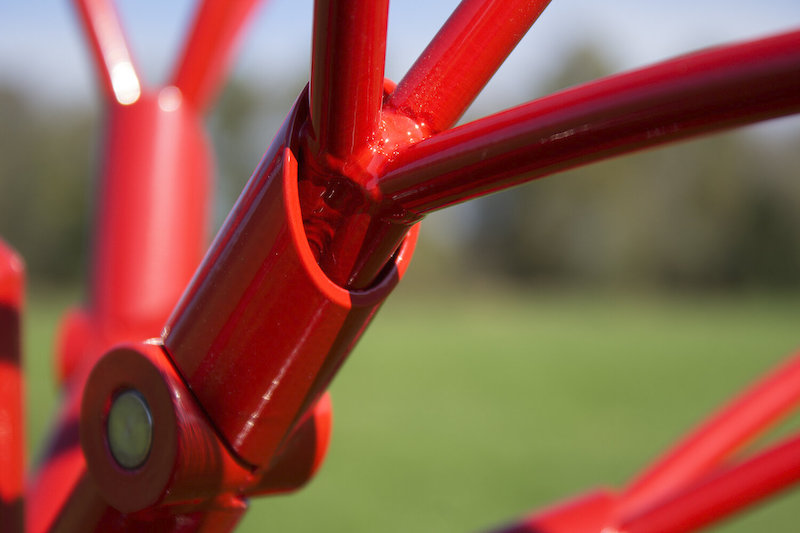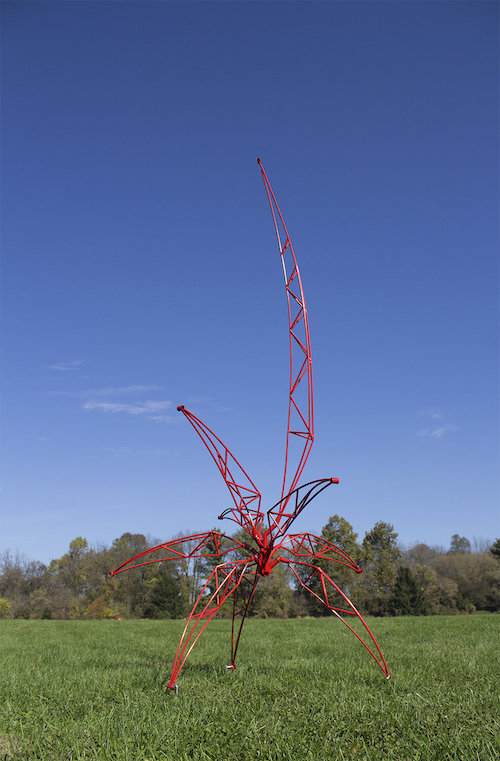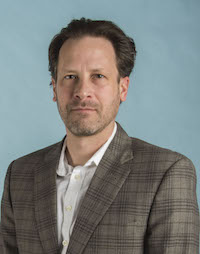
Prof. Jeremy Waak’s towering AGVC3v1 is ‘Good as Gold’
. . .
Tuesday, June 9th, 2020
Curving upward in a flight of powder-coated steel and stainless steel, Associate Professor Jeremy Waak’s AGVC3v1 is a flare of brilliant red against the sky.
Waak, Chair of PCA&D’s Foundation Department, calls the large-scale AGVC3v1 a “watershed moment” in his career — scaling up from tabletop-sized to 10 feet tall, manipulating metal with the same level of craft and detail he brings to pieces that easily fit in the palm of the hand.
The sculpture recently was included in “As Good As Gold,” a juried online exhibition by the Society of North American Goldsmiths. And it’s part of an ongoing series, Waak says, that’s an attempt “to combine my divergent interests in the mechanical and organic, the industrial and natural.”

Jeremy Waak’s AGVC3v1 is included in “As Good as Gold,” an online juried exhibition by the Society of North American Goldsmiths.
What hallmarks of your creative style does “AGVC3v1”, the piece in this SNAG show, bear—or does it represent a departure in any way?
JW:
This piece is based on drawings I did in the Southwest of an agave plant in bloom, created using the design elements of construction cranes. The plant is about nature, the void of human involvement or order, with its growth and death. The crane represents human reaching and achievement, while also relating to destruction and industrial decay.

Jeremy Waak
Was there a particularly challenging aspect of it to tackle and, if so, what was your process for getting past it?
JW: This sculpture was a watershed moment for me. While I had created large works in the past, this one was the first I was able to execute to the same level of craft and detail as I put into my handheld-sized works.
The opportunity came about because of the combination of me building my current studio, which gave me the technical abilities to do it, and the request from a long-time collector and patron of mine. During a visit to my studio, he saw the small tabletop-sized AGVC I made and asked me to make a large one for him. I had quite a bit of fun figuring out how to pull off my tight crafted work at that scale.
Can you briefly explain what you followed for this particular piece? Was it how you typically handle pieces of this (or any) scale?
JW: My process begins with drawing. I don’t draw it all out, like an engineer or industrial designer would. Rather, I draw enough to get the basic form of the idea. I work on proportions and gesture, not on details. If I plan out too much of it, there is no more passion to drive the making. I need to react, to relate to the piece as it comes into form. Often during the construction of a work, I will go back to drawing to solve decisions. Drawing allows me to test many ideas quickly and easily.
Where does AGVC3v1 “live” now?
JW: There are several individuals in the AGVC series. 3v1 is in a private collection. 3v2 is on display on the campus of Indiana University East, halfway through a two-year outdoor sculpture exhibition.
